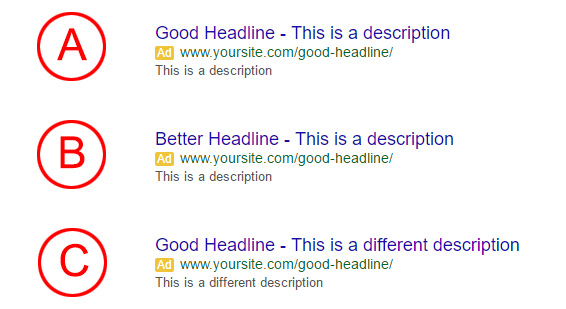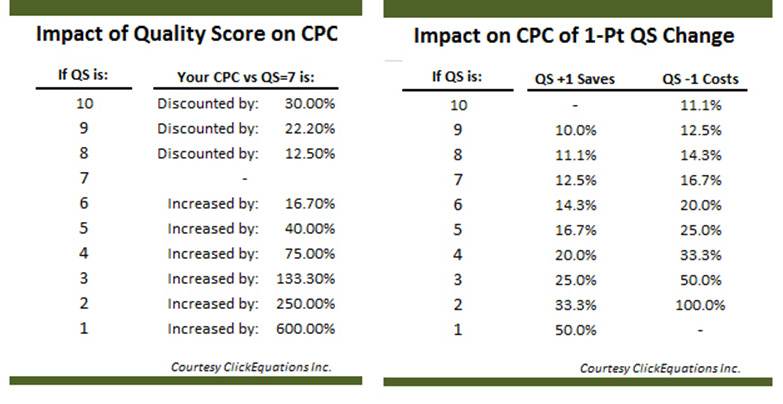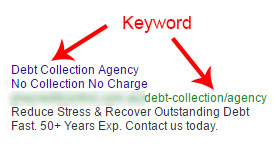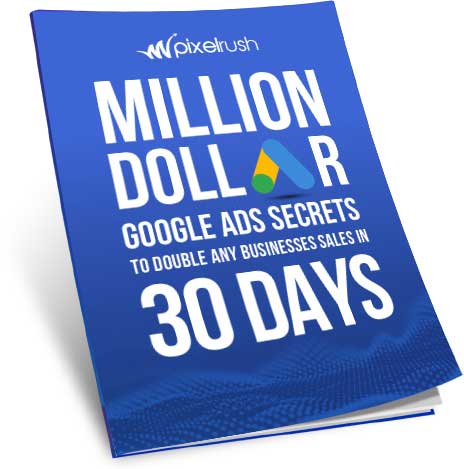Over the years I’ve seen too many Google Ads accounts setup in a way that makes me sad and inevitably becomes the reason why businesses Google Ads campaigns have remained unprofitable. You can optimise your landing pages as much as you like but if you want to generate the highest possible ROI from your Google Ads campaigns then you need to consider Quality Score.
There are multiple factors that Google considers when determining your Quality Score. According to Google, they are as follows:
- CTR – Click-through-rate
- Relevance of each keyword to its ad group
- Quality and relevance of the landing page
- Relevance of the ad text
- History of your Google Ads account performance
What I’m about to share will significantly improve your CTRs, Quality Scores, ad positions, impression shares plus have a significant impact on your cost per click and your conversions rate.
Only if you hate making more money should you stop reading now.
1. Use single keyword ad groups (SKAGs)
The single biggest issue I see with new clients’ accounts is that they’ve failed to effectively structure their account by segregating and organising keywords into tightly organized Ad Groups. I’ve seen many agencies even choose to skip this part only to stuff as many different keywords into one single Ad Group.
It’s impossible to gain a high quality score with this approach.
Justin Brooke, one of the most well-known media buyers, recommends single keyword ad groups. Single keyword ad groups (aka SKAGs) allow you to control ad relevance because only one keyword will trigger a specific ad.
Sadly Google recommends the opposite and that 10 – 20 keywords should be included per ad group as best practice, this is a mistake.

Through our own experiences we’ve seen that SKAGs can significantly improve your Quality score when combined with relevant ad copy and a relevant landing page.

But by now you’re probably thinking that you have a million keywords in your Google Ads account how is the approach scalable? The better question you should ask yourself is whether can you afford not to do it?
2. Create relevant ad copy using SKAGs
When you use the SKAGs approach, single keyword ad groups, it means that you can craft an Ad that is incredibly specific and relevant to the search phrase you’re targeting.
You want to include your keyword in both your Headline and the URL as well as send clicks to the most relevant landing page (more on that later).
Let’s say someone searches for “Debt Collection Agency” your ad with the keyword [debt collection agency] will fire and become a perfect match. Not only is this great for quality score it also improves the chance customers will click your ad because it’s 100% relevant and using the same language they’re using.
Think about it from the user’s perspective, if I search for “LED televisions” but I’m shown an advert for “Plasma televisions” then chances are high that I won’t click on it and even if I do then I’ll bounce anyway because it’s not exactly what I want.
Higher relevancy = higher click-through rate = higher Quality Score = lower cost per click = lower cost per conversion.
It’s a no brainer.
3. Use an Ad Copy Formula to improve CTR
Click through rate plays a big part in Quality score too so you want to continuously test new ad copy that produces the highest CTR.
Before we get started on our Ad copy formula it’s important to note that before we implemented SKAGs we would consistently see CTR in the range 4 – 8%.
Here’s the kicker:
After implementing SKAGs we noticed a huge increase, double or triple in some cases, in our CTR and now the exact same campaigns were seeing CTR in the 13% – 27% range. There is just a further reason to start reorganising your campaign structure.
Secondly, you want to be using a consistent formula for split testing your ad copy so that you’re constantly improving your CTR.
For each ad group we create three adverts as show below:

Basically what we’re doing is split testing three different adverts in a controlled fashion so that we can see whether it’s the headline, description or a combination of the two that will provide us with the highest CTR. In the example above Ad A is our control advert, it should be your highest performing CTR to date.
In Ad B we create a different headline but keep the same description as advert Ad A. In Ad C we keep the same headline as Ad A but we use a different description. Once the adverts are created we then let them run for as long as we can, 1000 clicks if possible. The longer the better and the more data we have the easiest it will be to spot which one is performing the strongest.
At the end of the tests our aim is to replace advert A with the highest performing advert and then we simply rinse and repeat and it all starts again. If you’re ads don’t outperform the control then create two new adverts for Ad B and Ad C and start the tests again.
4. Optimize your landing pages.
As part of Quality Score Google applies a value to the landing page experience. Google can apply three scores for Landing page experience – below average, average and above average.
 Google provides the following advice for improving your landing page experience.
Google provides the following advice for improving your landing page experience.
- Offer relevant, useful and original content
- Be specific when the user wants a particular thing
- Be general when the user wants options
- Promote transparency and foster trustworthiness on your site
- Openly share information about your business and clearly state what your business does
- Explain your products or services before asking visitors to fill out forms
- Make it easy for visitors to find your contact information
- Make mobile and computer navigation easy
- Organize and design your page well, so people don’t have to hunt around for information.
- Be fast—decrease your landing page loading time
- Make sure your landing page loads quickly once someone clicks on your ad, whether on a computer or mobile device.
In our case we want to ensure that all of our tightly created ad groups are sending clicks to the most relevant page. In most cases we want to ensure that the destination page has an H1 tag that uses our keyword, the page mentions the products or services we are advertising, it’s fast and it’s mobile responsive.
Once again Justin Brooke recommends sending each ad group to a unique landing page where the H1 matches the keyword. If you do this however you want to ensure that you have a method for building pages quickly, such as LeadPages, and ensure the pages are noindex nofollow so they don’t appear in the Google index. If you’re struggling to get a 10 out of 10 this might be the best option you have.
5. Identify and exclude irrelevant search terms.
We’ve said this before but we’ll say it again, negative keywords are the holy grail of successful Google Ads campaigns.
You want to control where you don’t want your ads just as much as where you do want your ads, negative keywords will help you achieve that.
Often when we build a new campaign we’ll conduct detailed keyword research but even then we won’t know exactly which search terms will provide the best return for our customers. There a thousands of combinations of search terms and it can be hard to define them all as exact match keywords.
Instead, you’ll likely use a combination of broad match, broad match modifier and phrase match to try to improve the spread and likeliness that customers will see your adverts and cover a range of relevant search terms. Let’s say you use the term +debt +collector which will match on any searches that include those two search terms.
Here is an example of when it will match:
- “Debt collector”
- “Small business debt collectors”
- “Debt collector jobs”
- “How to become a debt collector”
Using negative keywords we can exclude searches where we don’t want to our adverts to show, i.e. debt collector jobs. Not only will this stop you wasting valuable money on search terms that don’t do anything for your business they’ll also help you improve your Quality score because you’ll closely control which terms show your adverts.
What is the impact of quality score on CPC?
In 2009, Craig Danuloff at Click Equations published some charts that showed how much you save by raising your Quality Score. They looked like this:

So what does this table tell us?
The tables illustrate:
- The average savings experienced when gaining high Quality Scores (8, 9, or 10). It also shows us the potential losses of low Quality Scores (6 or below)
- The cost benefit per quality point score when determining how a Quality Score up or down by 1 point will affect your campaign.
Although this provides us with an estimate its well documented that the relationship between CPC and Quality score isn’t a linear one. What this means is that the table above is purely a reference but isn’t something we can actively use to calculate cpc values. There are also other undisclosed factors that Google uses when calculating CPC’s. All we know is that it’s important and the higher number we can gain for each search term we target the lower our CPC can be, definitely something we don’t want to ignore.



